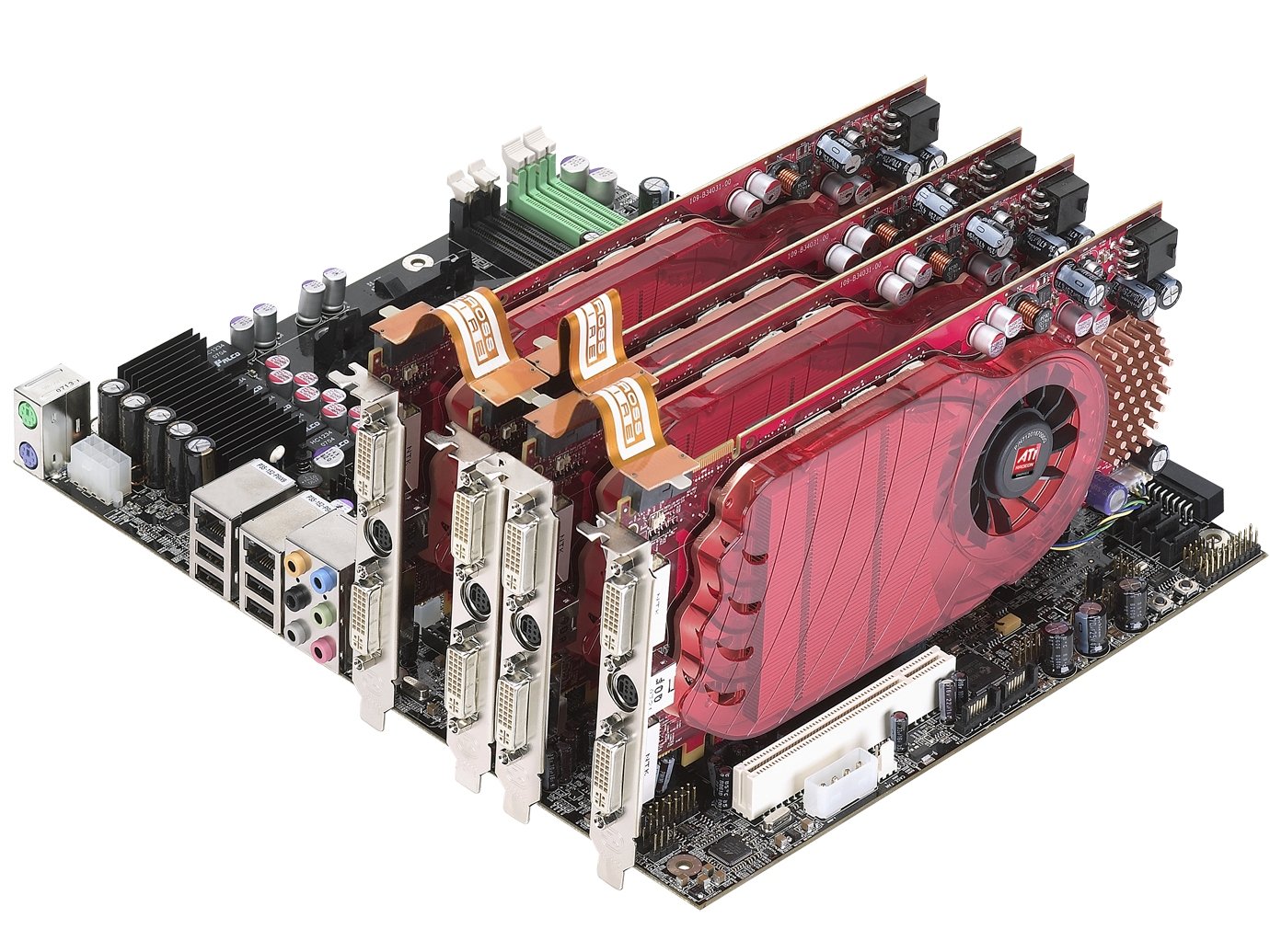TechRadar Verdict
A nice platform let down by a mediocre quad-core CPU
Pros
- +
Oodles of bandwidth
Lots of headroom for the future
Fantastic Overdrive tuning application
Cons
- -
Can't make up for Phenom's weaknesses
Does anyone really want four GPUs in a single PC?
Why you can trust TechRadar
It's all about the platform. That's the most important single message AMD wants you to grasp regarding the simultaneous launch of its new graphics cards, CPUs and the new 790 FX motherboard chipset.
Well, that and the fact that AMD is the first company to launch such a complete desktop computing solution. Or was it that the 'Spider' moniker it has chosen for the new platform refers to the four cores of the Phenom CPU combined with chipset support for four graphics cards running in Crossfire mode?
All-in-one AMD
Whatever the case, AMD's central argument is this: Thanks to the purchase of graphics outfit ATI last year, it is now in a unique position to supply a full suite of high performance parts - chipset, processor and graphics.
This, AMD claims, gives it an unparalleled ability to deliver a highly optimised and stable desktop PC platform. The whole of Spider is much greater than the sum of its parts, in other words. It's extremely plausible. But is it true?
You can find our thoughts on the quad-core Phenom CPU and Radeon HD 3800 series graphics card elsewhere. But the heart of the new Spider platform, the glue that binds it all together, is the new 7 Series motherboard chipset.
Previously known under the RD790 codename, this is AMD's first chipset based on power-efficient 65nm process technology. Three versions, the 790 FX, 790 X and plain vanilla 790, cater for enthusiast, performance and mainstream markets respectively. All share the same basic feature feature set that includes a number of new technologies.
First up is the introduction of the PCI Express 2.0 interconnect. The doubling of bandwidth to data-hungry peripherals, most significantly graphics cards, is the main benefit. It won't make a huge difference for systems with a single video card.
Sign up for breaking news, reviews, opinion, top tech deals, and more.
But it does become significant in the context of the 790 FX's support for anything up to four ATI graphics cards running in Crossfire multi-GPU mode. AMD claims that quad Crossfire arrangements can deliver up to 3.2x the performance of a single card. That's an impressive sounding statistic and no doubt true in certain circumstances.
Multi-GPU minority
However, the take up of multi-GPU solutions of any kind has to date been pretty pitiful. According to one recent survey, they represent just 0.41% of the market in typical gaming PCs.
That's largely because of the patchy performance, usability and reliability of both ATI's Crossfire platform and Nvidia's competing SLI technology. If ATI and Nvidia are having a hard time getting gamers to hook up a pair of GPUs, you have to wonder whether a quad-GPU solution is a remotely realistic proposition.
Of more tangible benefit is the official unveiling of the AM2+ CPU socket. Granted, the new Phenom quad-core chip is backwards compatible with existing AM2 motherboards.
However, several Phenom features including HyperTransport 3.0 and the split-plane power management require AM2+ for full exposure. The former delivers a big boost in I/O bandwidth to 5.4GT/s. The latter gives AMD much better control over power consumption when the system is either idling or experiencing low work loads.
Our first look at a 7 Series-based motherboard comes in the form of Gigabyte's GA-MA790FX-DQ6, yours for around £150. It's also our first chance to put AMD's claims regarding the cumulative effect of combining all its latest components in a single platform.
To that end, we kitted up this 790 FX powered board with a 2.4GHz Phenom quad-core processor and a pair of Radeon HD 3850s running in Crossfire mode. It's the complete AMD solution.
How does it compare with a 45nm Intel Core 2 quad-core processor running at 2.4GHz on Intel's latest X38 chipset, again with a pair of 3850 graphics board in Crossfire mode? It's not too far behind, but it does lose out in the majority of our tests, including video decoding, PCMark, Cinebench rendering and classic Super Pi-style number crunching.
We suspect most of the blame for that can be laid at the doorstep of the Phenom processor. However, the fact that the Intel platform outpoints AMD in 3DMark06 despite running a pair of ATI graphics boards is certainly a bit embarrassing.
No lack of features
Nevertheless, if you are in the market for an AMD-based board, the MA790FX-DQ6 certainly doesn't lack for features including all-solid capacitors, HD audio with low signal to noise rating and plenty of BIOS options. With no less than 42 PCI Express lanes and four PCI Express graphics slots, quad-Crossfire is also on the menu. For those with a taste for exotic system configurations, at least.
Finally, the 7 Series most impressive feature and perhaps best single product AMD has launched this year, is Overdrive. It's a comprehensive system tuning and overclocking tool and by far the slickest yet of its type. Overdrive is a Windows-based application that hooks into the BIOS of all 7 Series boards and gives users access to a full range of chipset and CPU tuning options.
Everything from CPU clock frequencies and memory timings to voltages and bus clockspeeds can be monitored and massaged. It completely removes the need to tamper with BIOS settings and is bound to be a hit with enthusiasts. Overdrive also caters for novices and nervous users with an auto setting as well as a simple slider bar option.
